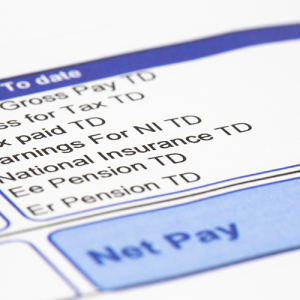10 March 2006
The proposed Planning Gain Supplement threatens to remove rather than strengthen the powers of local authorities that need to expand housing, while allowing central government to divert the cash elsewhere
The government's proposed Planning Gain Supplement has been billed as a means of strengthening the funding stream and powers available to public bodies trying to expand housing supply in the UK. But, in reality, it is more likely to have the opposite effect.
The PSG could lead to a reduction in capital funds available in areas where rapid and substantial housing growth is being planned. Public authorities use developer funding for schools, nurseries, libraries, sports facilities, fire stations, public transport and highway improvements. These have been recognised as necessary to support residential and commercial developments in growth areas.
In some areas, powers to secure agreements under Section 106 of the 1990 Town and Country Planning Act are being used on a substantial scale to secure funding for planning obligations that cover the capital investment needed. The proposals for PGS suggest that virtually all the expensive public services that often need to be provided away from the development in question would become 'outside the scope of planning obligations'.
This would be a retrograde step and damage the fair and efficient system that successful authorities currently use. It would break the self-regulating link between developments and the authorities responsible for securing proper services. At present, there is local accountability for both the planning decisions and provision of the associated services. Under the proposals, the PGS would be collected by Revenue & Customs and passed to the Treasury.
The paper suggests that the PGS is assessed at the time of full consent or 'reserved matters' approval. On large sites requiring substantial infrastructure, reserved matters are usually determined over a long period. Such an arrangement will not, therefore, generate the cash flow that the public sector needs to provide, for example, new schools. The paper indicates that distribution would be by government allocation in response to 'bids' by the authorities needing to secure the services.
No guarantees are offered regarding the synchronisation of investment funding with the developments themselves. This is unlike the present system, which keeps the local public bodies in full control. Redistribution across the country is also indicated — the implication being that this would take resources away from areas where full planning obligations are currently being secured to ensure that the requisite infrastructure is funded.
Government reasons for reducing local powers and replacing planning obligations with the PGS are spurious. The government states that the scale and nature of planning obligations varies across the country. However, as the intention of such obligations is to secure funding from developers for the public service facilities that enable development to proceed, the amount and nature is bound to vary according to the location and scale of the development.
In some areas, there is sufficient public service capacity, so investment might not be necessary. All arrangements are based on the statutory adopted local plan policies. When the appropriate practices are followed, planning agreements can readily connect the growth in the form of new development on any scale to the projects that will form part of the local authorities' capital programmes.
The proposals suggest various major services should be outside the scope of 'new planning obligations'. The key current arrangement, under which free land is being secured for services on the larger development sites, such as schools and sports centres, has failed to be recognised, either by design or accident.
Many readers will recall that other development land taxes in the UK have failed and been abandoned. In general, gains to landowners are already chargeable under the capital gains rules.
The government envisages a 'modest rate' of PGS. Given the current emphasis on brownfield sites, a frequent combination of high development costs and appreciable existing use values could easily make for a low PGS yield. A fair expectation is that in major housing growth areas, the suggested PGS is likely to yield less via the Treasury than a well run planning obligations regime.
This is without taking account of the unknown sums that central government might divert. If government seeks a greater tax yield in connection with increases in net land values, changes to such matters as capital gains tax roll-over relief could provide a simpler and more effective approach than the introduction of the proposed PGS.
If these proposals go ahead, the timely provision of key public services to support housing growth could easily be jeopardised.
Colin Rickard is the chief financial planning officer of Cambridgeshire County Council. He is writing here in a personal capacity
PFmar2006



















